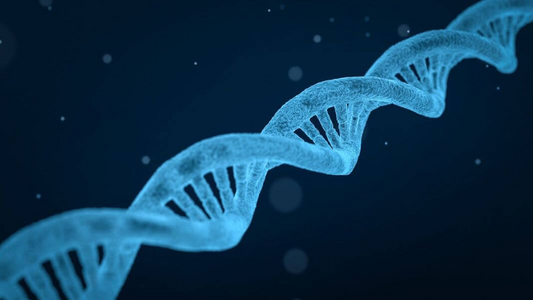Author: BalanceGenics Longevity Research Team (How100.com)
The process of reproductive aging is a natural phenomenon characterized by age-related changes and a decline in the reproductive system's function. For women, this process is particularly significant as fertility typically begins to decrease markedly after the age of 37. This article delves into the nuances of ovarian biology and the various factors driving reproductive aging, helping women make informed decisions as their biological clock ticks.
Table of Contents
- Understanding Ovarian Biology
- Impact of Ovarian Aging
- Perimenopausal Symptoms
- Bone Density Loss
- Cardio-Metabolic Risks
- Neurocognitive Risks
- Key Drivers of Reproductive Aging
- Endocrine Changes
- Oxidative Stress
- Chronic Inflammation
- Mitochondrial Dysfunction
1. Understanding Ovarian Biology
Despite the challenges posed by the decline in fertility, understanding the mechanisms behind reproductive changes can be empowering. This article offers a glimpse into reproductive aging to help women navigate the changes associated with their biological clock.
Exploring ovarian biology is fundamental for comprehending reproductive aging. By age 45, pregnancies become rare, and around age 50, menopause marks the end of a woman’s reproductive capacity. The decline in fertility is primarily due to ovarian aging, leading to a reduction in the quantity and quality of follicles. Ovaries are central to female reproductive health, regulating menstrual cycles, and supporting egg maturation.
Women are born with approximately 1–2 million oocytes, which diminish over time. After the age of 31, the rate of decline accelerates, impacting fertility. Follicles containing these oocytes also produce essential hormones like estrogen and progesterone. Estrogen is vital for bone health, cardiovascular health, and cognitive function, while progesterone supports pregnancy and provides protective effects on the brain and breast tissue.
2. Impact of Ovarian Aging
Perimenopausal Symptoms
The transitional phase before menopause, known as perimenopause, involves fluctuating hormone levels that cause symptoms like hot flashes, night sweats, mood swings, and sleep disturbances. Reduced estrogen levels can also lead to vaginal dryness and discomfort during sexual activity.
Bone Density Loss
Estrogen plays a crucial role in maintaining bone density. Its decline during menopause accelerates bone resorption, increasing the risk of osteoporosis and fractures. Managing bone health with adequate calcium and vitamin D intake becomes essential as estrogen levels wane.
Cardio-Metabolic Risks
Declining estrogen levels also impact cardiovascular health by causing dyslipidemia, increasing the risk of cardiovascular diseases and type 2 diabetes. Estrogen’s anti-inflammatory properties help prevent these conditions, and its reduction post-menopause raises these risks.
Neurocognitive Risks
Women face a higher risk of cognitive decline and dementia after menopause. The drop in estrogen levels is linked to changes in brain structure and function, affecting memory and increasing the risk of Alzheimer’s disease.
3. Key Drivers of Reproductive Aging: An In-Depth Look
Endocrine Changes
Changes in the endocrine system, particularly those involving the hypothalamic-pituitary-ovarian (HPO) axis, significantly influence reproductive aging. This axis regulates hormones essential for ovulation and reproductive health. As women age, the number of follicles decreases, leading to lower estrogen levels. Reduced estrogen impacts various bodily functions and increases susceptibility to conditions like osteoporosis and atherosclerosis.
Oxidative Stress
The accumulation of oxidative stress, primarily caused by reactive oxygen species (ROS), damages cellular structures and contributes to aging. In the ovaries, oxidative stress reduces the quality and quantity of oocytes. Factors such as aging, diet, and environmental pollutants exacerbate oxidative stress, making it a critical factor in reproductive aging.
Chronic Inflammation
Chronic inflammation is closely linked to accelerated aging and ovarian aging. Lower estrogen levels post-menopause lead to increased inflammation, contributing to chronic conditions such as osteoporosis and cardiovascular diseases. Estrogen helps regulate inflammation by interacting with specific receptors, and its reduction disrupts this process, raising inflammatory molecule levels.
Mitochondrial Dysfunction
Mitochondria play a crucial role in cellular energy production. As women age, mitochondrial dysfunction, including DNA mutations and reduced ATP production, affects ovarian function. This dysfunction can lead to issues with embryo development and increased risk of aneuploidy, affecting fertility outcomes.
Conclusion
Understanding the biological and physiological changes underlying reproductive aging empowers women to make informed health decisions. By addressing the key drivers of ovarian aging, such as endocrine changes, oxidative stress, chronic inflammation, and mitochondrial dysfunction, women can take proactive steps to manage their reproductive health.
BalanceGenics: Personalized One-Stop Longevity Platform (How100.com)
Launched in California in 2018, BalanceGenics ("How100") started out as a solution to our own needs. Our team consists of seasoned health experts, doctors, and entrepreneurs with a common interest in anti-aging.
We use the latest findings from global leading longevity scientists to develop products and services, focusing on Longevity Supplements (cellular anti-aging) and Physical Therapy Exercises (physical anti-aging).
BalanceGenics' Mission is to create personalized solutions to live longer but stay younger.
Build Your Personalized Anti-aging & Longevity Plan.
References
- Morrison, D. J., & Preston, T. (2016). "The role of gut microbiota in the metabolism of dietary nutrients." Journal of Nutrition and Metabolism.
- Tang, W. H. W., et al. (2013). "Intestinal microbiota metabolism of l-carnitine, a nutrient in red meat, promotes atherosclerosis." Nature Medicine, 19(5), 576-585.
- Schugar, R. C., et al. (2017). "The TMAO hypothesis: A potential risk factor for cardiovascular disease." Frontiers in Cardiovascular Medicine, 4, 1-10.
- Kumar, A., & Gupta, A. (2020). "Microbiota and cardiovascular disease: A review." Heart Failure Clinics, 16(3), 363-375.
- Cleveland Clinic. (2017). "High TMAO Levels Linked to Increased Cardiovascular Risk." Cleveland Clinic Newsroom.
- Wu, H., et al. (2015). "Dietary patterns and cardiovascular disease: A review." Nutrition Reviews, 73(8), 547-558.
- Zhang, A., et al. (2019). "Gut microbiota and cardiovascular disease: A review." Journal of Cardiovascular Translational Research, 12(3), 235-245.
By incorporating these research-backed strategies, women can take proactive steps to manage reproductive aging and maintain overall health.



